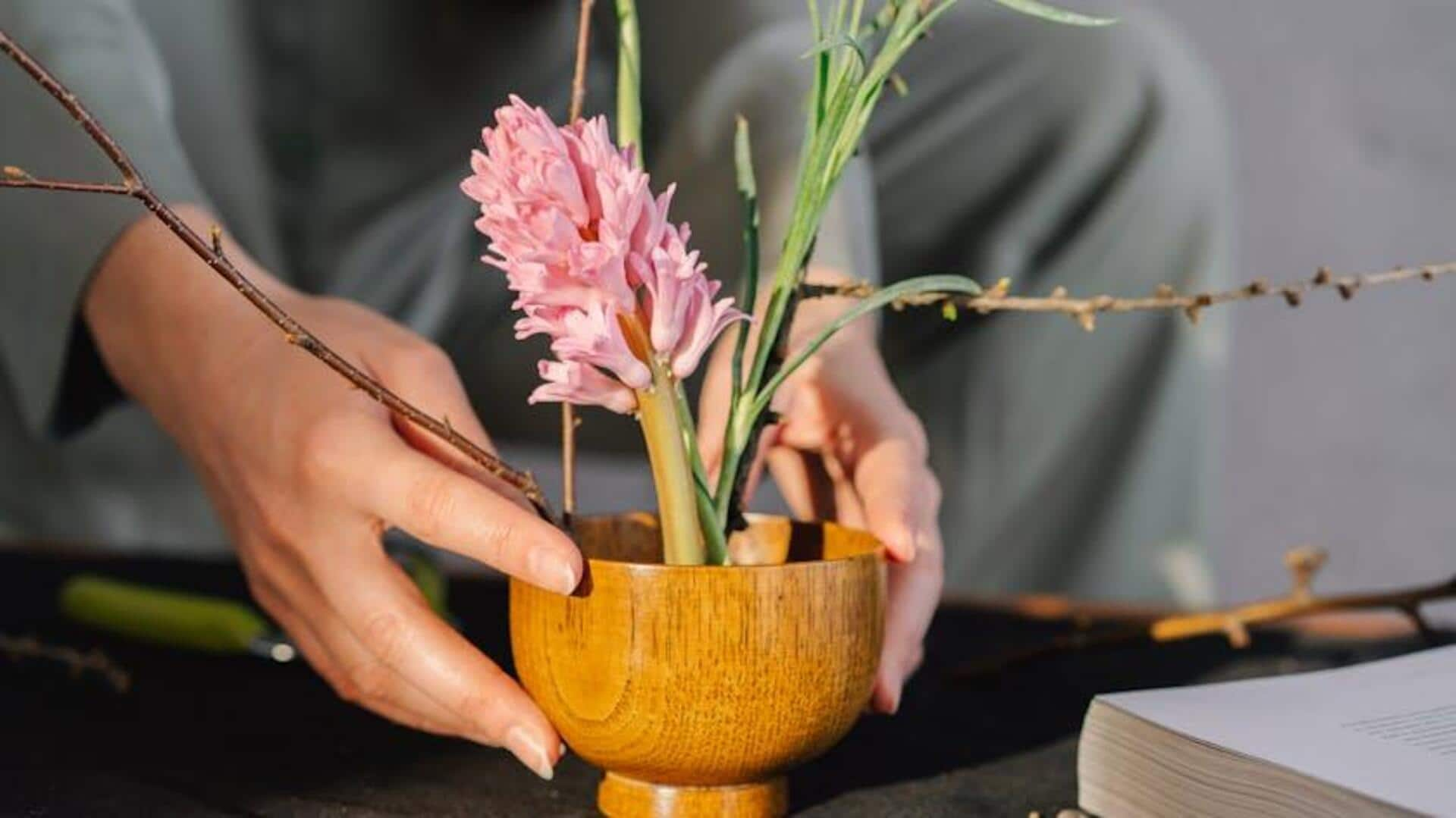
Things about ikebana we bet you didn't know
What's the story
Ikebana, the Japanese art of flower arrangement, is not just a decoration practice. It is an art of harmony, balance, and simplicity. Unlike western floral arrangements that emphasize volume and color, ikebana brings forth the beauty of every single stem and leaf. This ancient art has developed over centuries and occupies an important position in Japanese culture. Here are five uncommon facts about ikebana that make it special.
#1
Origin dates back to 7th century
Ikebana dates back to the 7th century when it was brought to Japan by Chinese Buddhist missionaries. Used as offerings at altars at first, it slowly developed into an art form by samurai and aristocrats. Eventually, different schools developed their own styles and philosophies. The history of ikebana emphasizes on how culturally-rooted it is in Japan.
#2
Emphasis on asymmetry
Unlike traditional Western floral arrangements that often opt for symmetry, ikebana places a great emphasis on asymmetry as an important principle. This applies the natural world where perfect symmetry is an anomaly. By focusing on asymmetrical designs, practitioners aim to instill a sense of movement and life within their arrangements. This principle leads the viewer to appreciate the beauty in imperfection.
#3
Minimal use of flowers
In stark contrast to lush bouquets laden with several blooms, ikebana employs minimal flowers to deliver its message. The focus is on line, shape and form rather than pure quantity or color variety. Each element in an arrangement is deliberately chosen for its contribution to the overall composition's balance and harmony.
#4
Seasonal awareness is essential
Seasonal awareness is important in ikebana practice as it reflects nature's cycles over the year through plant choices corresponding with each season's characteristics. This includes blooming patterns or foliage changes, like autumn leaves turning red-orange hues during fall months, while spring brings cherry blossoms, symbolizing renewal after the winter dormancy period ends.
Tip 1
Spiritual connection through practice
Practicing ikebana gives more than aesthetic pleasure; it establishes a spiritual connection. This mindful activity provides a meditative quality, letting the practitioners appreciate the beauty of nature. It encourages one to pause and notice things often overlooked, promoting environmental preservation and sustainability. Practicing ikebana cultivates appreciation for simple materials and balance of nature, for both the practitioners and the environment.